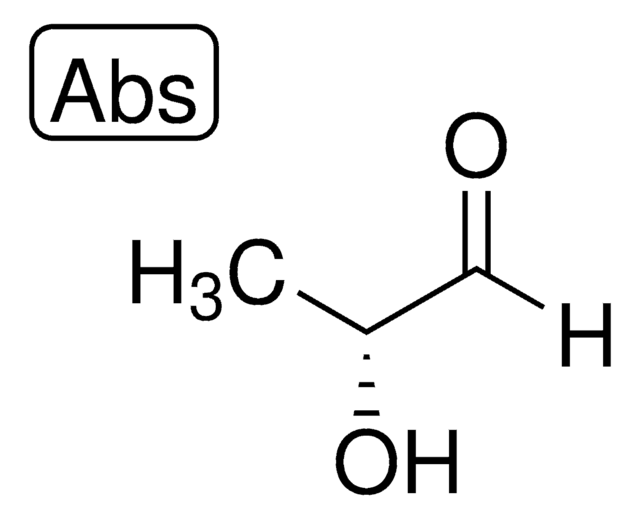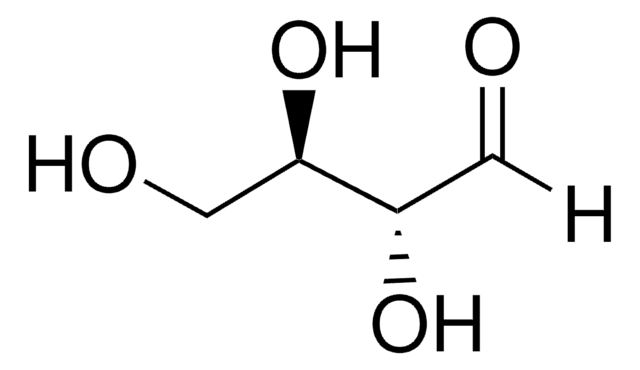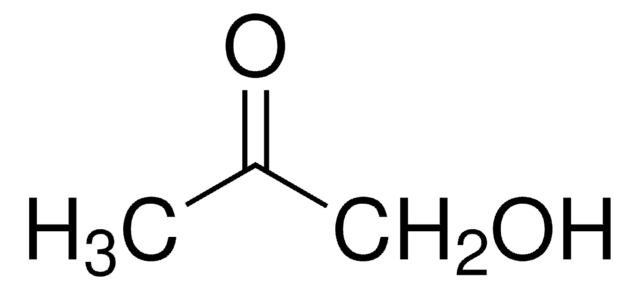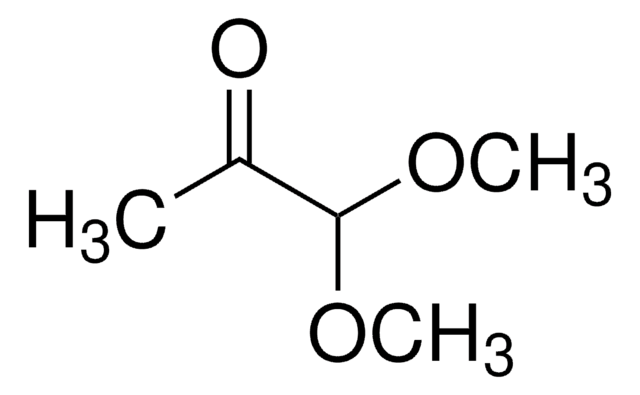推薦產品
化驗
≥95.0% (TLC)
品質等級
光學純度
enantiomeric ratio: ≥98.0:2.0 (HPLC)
濃度
1 M in H2O
儲存溫度
−20°C
SMILES 字串
C[C@H](O)C([H])=O
InChI
1S/C3H6O2/c1-3(5)2-4/h2-3,5H,1H3/t3-/m0/s1
InChI 密鑰
BSABBBMNWQWLLU-VKHMYHEASA-N
生化/生理作用
L-Lactaldehyde is an intermediate metabolite in the pyruvate metabolism pathway and is irreversibly produced from pyruvaldehyde via the enzyme aldehyde reductase, which is then irreversibly converted to propylene glycol via aldehyde reductase.
儲存類別代碼
10 - Combustible liquids
水污染物質分類(WGK)
WGK 3
閃點(°F)
Not applicable
閃點(°C)
Not applicable
客戶也查看了
Y Zhu et al.
Journal of bacteriology, 171(2), 862-867 (1989-02-01)
Catabolism of the six-carbon compound L-fucose results in formation of dihydroxyacetone phosphate (C-1-to-C-3 fragment) and L-lactaldehyde (C-4-to-C-6 fragment) as intermediates. The fate of lactaldehyde depends on the respiratory growth conditions. Aerobically, lactaldehyde is oxidized to L-lactate by an NAD-linked dehydrogenase
THE METABOLISM OF LACTALDEHYDE. VI. THE REDUCTION OF D- AND L-LACTALDEHYDE IN RAT LIVER.
S M TING et al.
Biochimica et biophysica acta, 89, 217-225 (1964-08-26)
Cristina Montella et al.
Journal of bacteriology, 187(14), 4957-4966 (2005-07-05)
The FucO protein, a member of the group III "iron-activated" dehydrogenases, catalyzes the interconversion between L-lactaldehyde and L-1,2-propanediol in Escherichia coli. The three-dimensional structure of FucO in a complex with NAD(+) was solved, and the presence of iron in the
L Baldomà et al.
Journal of bacteriology, 170(1), 416-421 (1988-01-01)
L-Lactaldehyde is a branching point in the metabolic pathway of L-fucose and L-rhamnose utilization. Under aerobic conditions, L-lactaldehyde is oxidized to L-lactate by the enzyme lactaldehyde dehydrogenase, while under anaerobic conditions, L-lactaldehyde is reduced to L-1,2-propanediol by the enzyme propanediol
Seiya Watanabe et al.
The FEBS journal, 275(20), 5139-5149 (2008-09-17)
Fungal Pichia stipitis and bacterial Azotobacter vinelandii possess an alternative pathway of L-rhamnose metabolism, which is different from the known bacterial pathway. In a previous study (Watanabe S, Saimura M & Makino K (2008) Eukaryotic and bacterial gene clusters related
我們的科學家團隊在所有研究領域都有豐富的經驗,包括生命科學、材料科學、化學合成、色譜、分析等.
聯絡技術服務









